| THE OLDEST MAGIC LANTERN IN THE WORLD |
The first one.....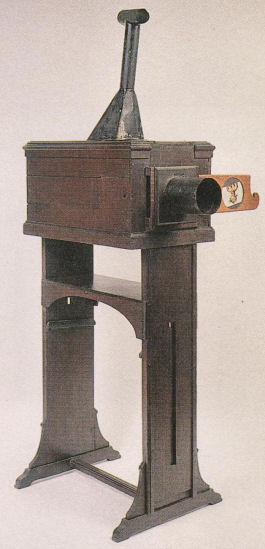 Een groote toverlantaarn; op de beste en keurlykste manier gemaakt, met verscheide groote vergrootglazen, brandspiegel, en zeer zindelyk geschilderde figuren, Lyst der Instrumenten 6 a, achter V. MUSSCHENBROEK, Natuurk. [1739] (A large magic
lantern..... List of Instruments 6a, V. MUSSCHENBROEK, Physician
[1739]) |
|
|
The objective lens system got lost, just like ‘2
cloths of linen weighed with lead and attached
to a stick to show the figures of the lantern on them’;
fortunately, however, the concave mirror was saved . Also
a little wooden chest containing the original hand painted lantern
slides is still with the device. The pictures on the glasses vary
from lovely landscapes to terrifying satanic creatures. |
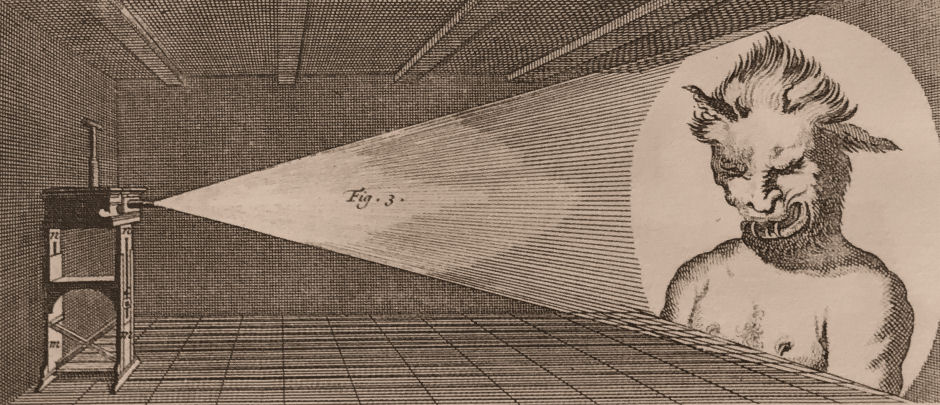 De toverlantaarn in gebruik. engraving by J.W. 's Gravesande, Wiskundige grondbeginselen der natuurkunde, door proefondervindingen gestaafd (Leiden 1742). |
|
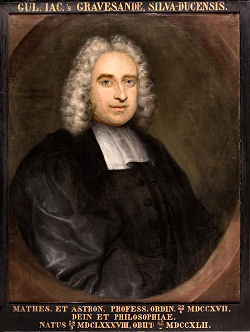 |
WILLEM
JACOB ’s GRAVESANDE (Sept. 26, 1688, ’s Hertogenbosch, Neth.– Febr. 28, 1742, Leiden, Neth.) Dutch mathematician and physicist. He improved experimental physics by clear demonstration tests, for example the ‘ball and ring of ‘s Gravesande’ to show the expansion of metals when heated. For his experiments and discoveries he used instruments made on his behalf by Jan van Musschenbroek. ‘s Gravesande laid the foundations for teaching experimental physics. |

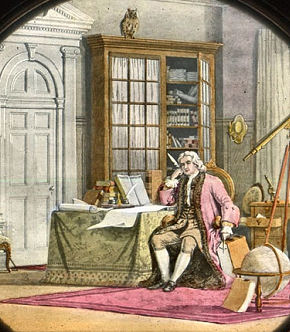 |
|
JAN
(JOHANN) VAN MUSSCHENBROEK (Aug. 9, 1687, Leiden, Neth - Sept. 16 , 1748, Leiden, Neth.) the son of Johann Joosten, instrument maker, the first in Holland to construct physical instruments like pneumatic pumps, microscopes and telescopes. Jan also became an instrument maker and made instruments for ‘s Gravesande and for his brother Pieter van Musschenbroek, inventor of amongst other things the Leyden Jar, a device that could store large amounts of electric charge. Pieter succeeded ‘s Gravesande in 1740 as a professor at the University of Leiden. This beautiful glass magic lantern slide in a 4" x 7" hardwood frame possibly shows Jan's brother, Pieter or Petrus. The circular glass has a 3" diameter. C. 1895, made by McIntosh. |
| |
©1997-2021 'de Luikerwaal' All rights reserved. Last update: 27-05-2021. |
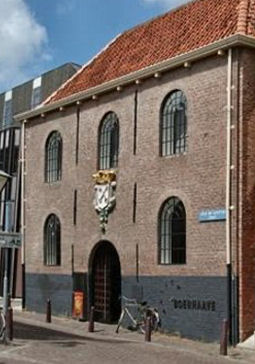 The
oldest magic lantern, as far as we know, is located in Leiden, the
Netherlands, in the Museum Boerhaave. The projector was made
about 1720 by the Dutch instrument maker Jan van Musschenbroek and
was once the property of Willem Jacob ‘s Gravesande, professor
of physics at the University of Leiden. After his death in 1742
the university bought with foresight his whole collection. The
purchase price of the projection lantern was one hundred guilders.
By this purchase the Leids Fysisch Kabinet (Physical Cabinet,
Leiden) got the best and most complete collection of scientific
instruments in the world. About 250 objects from this Cabinet,
among them the magic lantern, have been preserved. Together they
form one of the most important collections of the
The
oldest magic lantern, as far as we know, is located in Leiden, the
Netherlands, in the Museum Boerhaave. The projector was made
about 1720 by the Dutch instrument maker Jan van Musschenbroek and
was once the property of Willem Jacob ‘s Gravesande, professor
of physics at the University of Leiden. After his death in 1742
the university bought with foresight his whole collection. The
purchase price of the projection lantern was one hundred guilders.
By this purchase the Leids Fysisch Kabinet (Physical Cabinet,
Leiden) got the best and most complete collection of scientific
instruments in the world. About 250 objects from this Cabinet,
among them the magic lantern, have been preserved. Together they
form one of the most important collections of the 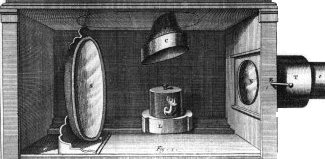 chimney on the top of the body. According to the description in ‘s
Gravesande’s book ‘Physices elementa mathematica experimentis
confirmata’ the lantern was equipped with an oil burning light
source with four flames. Thanks to a concave mirror and an
ingenious lens arrangement the image was visible at a distance of up to ten metres.
The height of the lantern was, including the chimney, 187
centimetres.
chimney on the top of the body. According to the description in ‘s
Gravesande’s book ‘Physices elementa mathematica experimentis
confirmata’ the lantern was equipped with an oil burning light
source with four flames. Thanks to a concave mirror and an
ingenious lens arrangement the image was visible at a distance of up to ten metres.
The height of the lantern was, including the chimney, 187
centimetres.